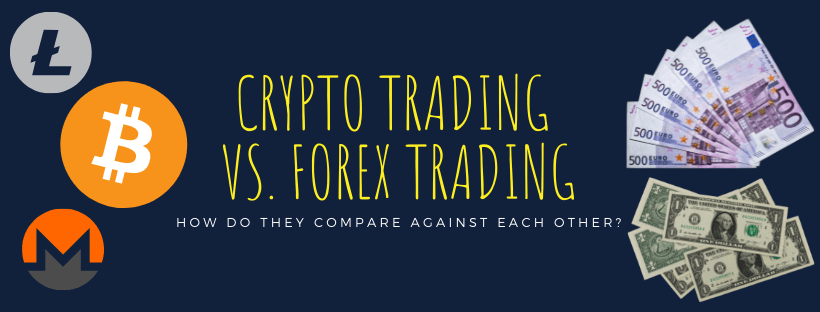Many people are unaware of the differences between forex and cryptocurrency trading.
Since we trade both forex and cryptocurrencies, we thought it would be cool to create a guide that explains the differences between the two.
So, these are the areas we decided to focus on:
- Difficulty of getting started
- Knowledge intensity
- Transaction costs
- Difficulty of making money
- The amount of money you need to begin
- Availability
- Number of trading instruments
- Security
- Volatility
- Liquidity
Click on any of the links above for a detailed explanation.
Also, if you’re entirely new to trading, we recommend you read the following two sections. These will give you a high-level overview of both forex and cryptocurrency trading.
What is Forex Trading?
Forex trading is the buying and selling of different currencies with the intention to profit from exchange rate movements.
To get a more granular picture of how it works, we must first understand why exchange rates move in the first place.
You probably know that the value of your dollar is not constant, although prices are fairly consistent from one day to the next. But for instance, $1 in 1955 would have bought you 2 McDonald’s meals (1 burger, fries and soda) and today it might get you a glass of water.
This reduction in purchasing power is called inflation and you can directly observe it without setting foot in foreign countries.
Inflation occurs when the supply of the dollar increases. There’s no limit to how many dollars can exist. Therefore, the number of dollars keeps growing as the economy expands and the government needs more money to finance its operations.
You’re probably also aware that other countries don’t use the US dollar because they have their own currencies. This means that each country is responsible for regulating it’s own currency supply.
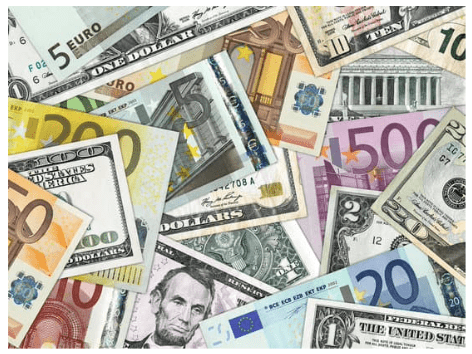
If the US decides to print a lot of new dollars, the dollar will be more abundant and thus, less valuable. This will increase the prices at home, but it would have little impact on German prices because they are denominated in euros.
Now, if the purchasing power of different currencies change over time, exchange rates between currencies must also change.
If one dollar equals one euro today, and tomorrow there are twice as many dollars but the number of euros doesn’t change, guess what happens? People in Europe will realize the dollar isn’t as valuable as it was, and they will start to exchange one euro for two dollars.
This is exactly how the foreign exchange market works. Well, kind of. There are many different factors that can influence the relative supply and demand of currencies.
For example, some people might trade when the US is purchasing more goods from Europe than the other way around because that means a lot of dollars are being exchanged for euros.
The increased demand for euros can make it more valuable compared to the dollar on the forex market while distorting prices between the US and Europe. In the long run, however, prices are expected to return to a level where the same goods are priced equally, just in different currencies.
What’s important is that exchange rate adjustments are usually not instantaneous and market fundamentals can be perturbed by errors in information processing, transaction costs, biases, etc.
Thus, a more accurate definition for forex trading could be: the identification and exploitation of currency market inefficiencies.
Forex trading can be done in many different ways through many different trading strategies.
What is Crypto Trading?
Crypto trading is very similar to forex trading in that it involves buying and selling different currencies with the intention to generate profits. The currency here however, is not a national currency like the dollar or the euro, but a cryptocurrency.
There is a variety of cryptocurrencies in existence, and people can buy and sell them just like then can with national currencies.
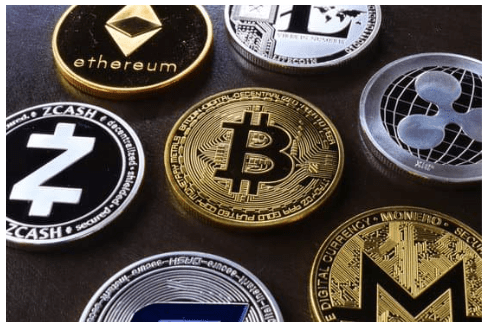
The cryptocurrency everyone has heard of is Bitcoin.
The great thing about Bitcoin is that it is inherently scarce. Unlike national currencies, whose supply is constantly being increased by the government, it is impossible to create more Bitcoins in response to increased demand. This makes Bitcoin similar to gold.
There will only ever be 21 million Bitcoins in existence. These are algorithmically released at an increasingly slower rate and awarded to those who help validate transactions on the network.
The low rate of Bitcoin’s supply growth meant that as the popularity of it grew, its price exploded simply because it is impossible to create more Bitcoins to fulfill increased demand.
The spectacular rise in the value of Bitcoin and the surrounding volatility has attracted many speculators who want to take advantage of its price movements.
It has also paved the way for exponential growth in the landscape of cryptocurrencies.
As a result, traders today can choose from a multitude of cryptocurrencies. Many of these are derived from Bitcoin or more specifically, the blockchain technology that powers bitcoin.
The Ethereum network also uses blockchain technology, but with a far more versatile implementation that has the capability to host digital assets, smart contracts, and other cool things.
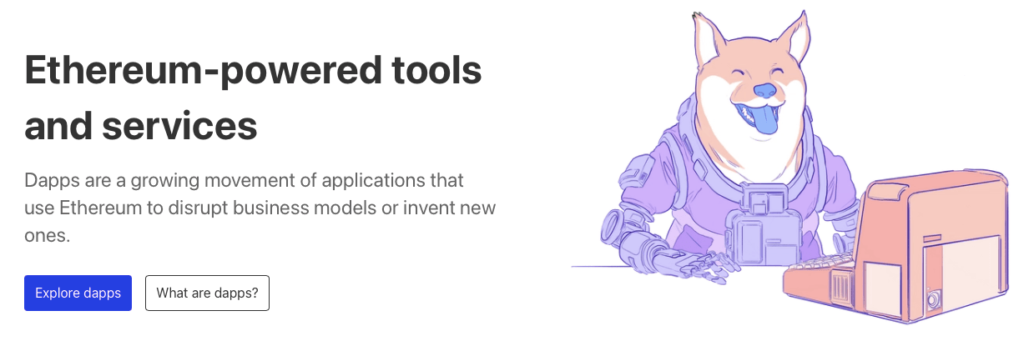
Oh, and the Ethereum network also has its own native cryptocurrency, Ether, which is now the second most popular cryptocurrency after Bitcoin.
While both Bitcoin and Ether have utility, this is not a prerequisite for a cryptocurrency.
There are also meme coins, which are heavily community-driven tokens. Their prices are more influenced by social media and online community sentiment than the benefits they bring to society.
The run-up in the price of Dogecoin is a great example.
That said, while cryptocurrency investors are less likely to invest in meme coins, cryptocurrency traders are usually more concerned with the price action than the underlying asset.
Cryptocurrency trading requires an active market, so it is easy to buy and sell whenever price trends emerge. The nature of the asset is usually less important, although more established coins typically have proper trading volume and lower transaction costs.
Crypto Trading vs. Forex Trading
Now that you know the difference between forex and cryptocurrency trading, it’s time to explore the two in more detail. The table below gives you a quick overview of the key differences.
Forex trading | Crypto trading | |
Difficulty of getting started | Easy | It is easy to get started if you trade established coins, but more difficult if you want to invest in new coins. |
Knowledge intensity | High | Moderate |
Transaction costs | Usually low | Normal or high with new coins |
Difficulty of making money | High | High but easier to get lucky |
The amount of money you need to begin | High or low—depends on your goals | High or low—depends on your goals |
Availability | 24 hours per day, 5 days per week | 24 hours per day, 7 days per week, plus public holidays |
Number of trading instruments | Limited | Plenty |
Security | Usually very secure, but there are a few dishonest brokers. | It is secure if you use a centralized exchange. On decentralized exchanges, you must be more vigilant to scams. |
Volatility | Forex pairs are usually not very volatile. It is rare for them to move more than a few percentage points in a given day. | Cryptocurrencies are very volatile. It is common for new coins to move hundreds of precents in a day and for established coins to see double digit price swings. |
Liquidity | High | Moderate |
This article blongs to ForexSpringBoard.com.
Difficulty of Getting Started
Getting started with forex trading is fairly simple. You need to open a trading account with a broker and deposit some funds, but that’s pretty much it.
Although it may take a few days for the broker to verify your details and allow you to make withdrawals, you can usually begin trading right after you open the account.
When it comes to cryptocurrencies, the process can be equally simple or much more complicated depending on where and how you want to trade.
To begin with, many forex brokers today also offer cryptocurrencies. If you choose to trade cryptocurrencies with your forex broker, the process of getting started is as simple as starting with trading currencies.
There are also central exchanges dedicated to cryptocurrency trading. The most popular is probably Binance, but there are plenty of others.
The ease of using these platforms is well-illustrated by Binance’s current homepage:
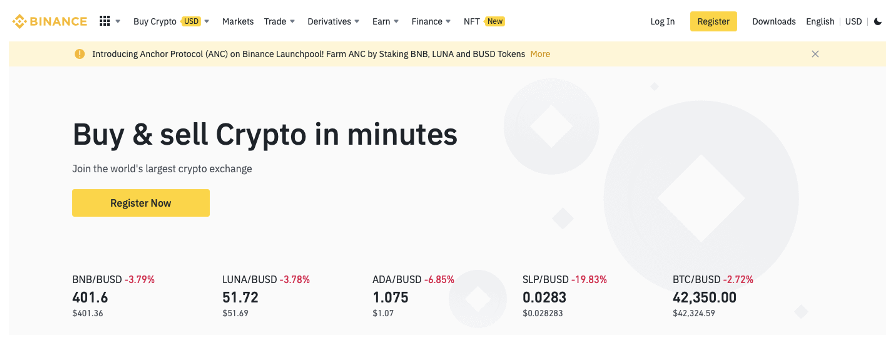
You can literally open an account within a few minutes and begin trading cryptocurrencies. Cryptocurrency exchanges will have a much wider selection of cryptocurrencies available compared to forex brokers.
Cryptocurrency trading gets more complicated when you decide to steer clear of centralized exchanges like Binance and dive into decentralized crypto exchanges (DEXs).
These trading venues rely on automated algorithms to coordinate trading between users and employ no intermediary between buyers and sellers.
An example of a DEX is Uniswap; an entirely peer-to-peer exchange without any company or other institution managing the platform. Trading on DEXs is not rocket science, but it requires more expertise than trading on centralized platforms.
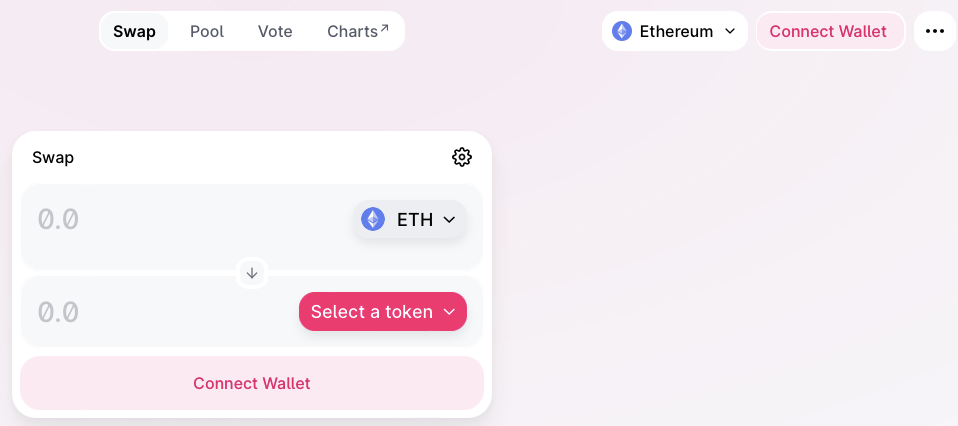
You will have to create a cryptocurrency wallet (like MetaMask) and fill your wallet with a cryptocurrency that is accepted on the DEX. For instance, you might purchase some Ethereum on Binance and send it to your wallet.
You then have to connect your wallet to the DEX, which will allow you to start swapping your ETH to various tokens. You will receive no assistance throughout this process, and it is easy to run into frauds if you don’t pay attention.People use DEXs to gain access to coins in their early phases where they have the most upside potential (and also the greatest risk to go bust). Meme coins like DogeCoin and Shiba Inu were traded on DEXs before they gained enough popularity to be introduced to centralized exchanges.
Knowledge Intensity
Before we get started on this, let’s clarify something first: anyone can trade.
Trading is simple. The decisions you must make are limited to whether you want to buy, hold, or sell. Even a five-year-old can make these decisions.
The hard part is to make the right decisions enough times that you grow your account over time. This is where understanding the market plays a crucial role and knowledge intensity becomes an important question.
In terms of technical analysis there is no difference between forex and crypto.
A double top pattern on a currency chart looks identical to a double top on a crypto chart. It’s implications, limitations, and trading techniques also remain the same. This is also true for technical indicators and other technical analysis tools.

So, while learning technical analysis is a must, the same set of principles apply for both forex and crypto.
Differences arise when it comes to fundamental analysis.
Fundamental analysis is a method of measuring intrinsic value by examining various factors the chart doesn’t show.
In forex you must keep tabs on interest rate changes, central bank activities, trade policies, investment flows, and many other things that have an impact on the relative value of international currencies.
In the case of cryptocurrencies however, there is a relative lack of information regarding intrinsic value. You can look at market sentiment or impending regulations, but there are fewer variables to monitor.
And even though most cryptocurrencies serve noble purposes such as “replacing the existing financial system and offering an alternative in which transactions are independent from banks and the state and based on cryptographic proof instead of trust” (source), it is still mostly speculation whether or not these visions will gain mainstream adoption.
You then have to connect your wallet to the DEX, which will allow you to start swapping your ETH to various tokens. You will receive no assistance throughout this process, and it is easy to run into frauds if you don’t pay attention.
You then have to connect your wallet to the DEX, which will allow you to start swapping your ETH to various tokens. You will receive no assistance throughout this process, and it is easy to run into frauds if you don’t pay attention.If anything, forming an opinion on this matter might be easier than keeping up with a multitude of economic data that shape long-term trends in currency markets.
Transaction Costs
Transaction costs have a significant impact on the profitability of trading strategies. So how does forex trading compare to cryptocurrency trading on this front?
The foreign exchange market is the most active market in the world with an estimated $5.3 trillion daily trading volume. As such, it is characterized by heavy competition between financial intermediaries. This is good for traders as trading costs have declined to fairly low levels.
However, trading costs have not disappeared. They normally work by forex brokers quoting two separate prices: one for buying and one for selling. The spread between these two prices is the broker’s profit.
To illustrate how it works let’s assume the following:
- the current EUR/USD sell price is 1.1350
- the current EUR/USD buy price is 1.1352
Anyone wanting to sell euros for dollars can do so at the rate of 1.1350 dollar per euro. Similarly, anyone wanting to buy euros with dollars can do so at the rate of 1.1352.
For example, if Alison decides to sell euros for dollars, she will pay the EUR/USD sell price of 1.1350. Should Alison sell 100,000 euros, she will receive 113,500 dollars (1.1350 * 100,000).
At the same time, whoever buys the euros from Alison will pay the EUR/USD buy price of 1.1352. With the same 100,000 euro transaction, this involves a payment of 113,520 dollars.
The end result is that the buyer pays $113,520, the seller receives $113,500, and the broker pockets the $20 difference.
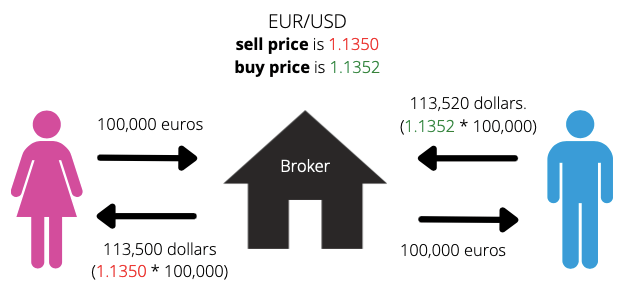
Forex brokers are usually strictly regulated so most of them are very transparent about the fees they charge, letting you easily compare and choose the best deal.
When it comes to cryptocurrencies, trading fees work differently and they can range from fairly low to extremely high. It depends on the exchange (centralized or DEX) and the coin you trade.
Centralized exchanges like Binance usually charge more reasonable fees which are described in detail on their websites.
Since the type of fees can vary a lot between different exchanges, a smart thing to do is Google “[exchange name] fee schedule”. That way, you can quickly see the applicable fees at a particular exchange.
You’ll commonly see that crypto exchanges employ volume-based discounts. Traders who trade more frequently are placed in higher tiers and pay less in commissions.
Transaction fees can really get out of hand when you trade on decentralized exchanges.
For example, on the Ethereum network you will pay “gas fees,” which are the transfer fees paid to people who process transactions on the Ethereum blockchain. The busier the network, the more data there is to be handled so gas fees can skyrocket during increased market activity.
Also, relatively new coins tend to have buy or sell taxes imposed on them— or sometimes both. These taxes are independent from the government and go towards the development of the project instead.Here’s an example:

Difficulty of Making Money
Forex vs. crypto: which is more profitable? This is a question people ask all the time.
Here’s the truth: trading is hard regardless of the market.
Everyone wants to make money and you’re competing with some of the brightest minds. Mispricings are quickly discovered and eliminated which means that most price movements are random and unpredictable.
Even if you devise a method for deriving profits, your return must cover transaction costs, beat inflation after taxes, and be enough to make all this hassle worthwhile.
We don’t want to discourage you, but don’t expect trading to be easy. On the flip side, it can be very profitable if you have the perseverance to learn and become successful. This is just as true for forex as it is for crypto.
But what does the learning curve look like for crypto trading vs. forex trading?
In a nutshell: there’s not much difference between forex and crypto day trading. Both are very difficult to master. As for longer term trading/investing, you might have an easier task with cryptocurrencies.
Let us elaborate.
It is important to highlight that forex trading is done on margin.
This means that when you deposit money into your trading account, you’re essentially putting down a collateral. Your broker then loans you funds so that you can open trades.
In the US, there’s a 2% deposit requirement on the notional value of forex transactions involving major currencies, which means that your initial deposit can be leveraged up to 50x.
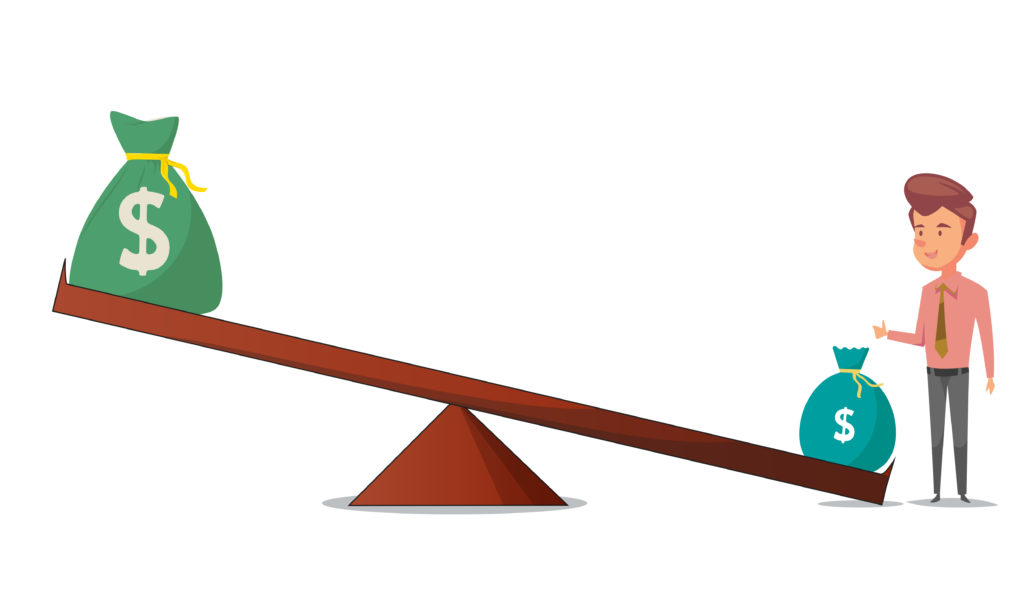
If the market goes against you, your trade is automatically closed once your deposit can’t cover the losses.
Of course, it is possible to trade forex without margin, but you would need to deposit hundreds of thousands of dollars, if not millions, because currencies move in very small increments.
Since trading forex means you will typically control disproportionally large position sizes compared to your account size, timing and risk management are crucial.
Even a slight adverse price swing can quickly eliminate your entire trading account if you don’t pay attention. Forex traders almost exclusively use stop loss orders, profit targets, and various techniques to identify proper entry and exit points.
Compare this to crypto where people frequently buy and hold cryptocurrencies until their value goes up. By no means are we saying that there are no serious traders out there, but people often treat their cryptocurrencies as lottery tickets.If you only invest what you can afford to lose and spread out your investment across many cryptocurrencies, it might make sense. After all, each crypto has a limited downside but an unlimited upside. Plus it only takes one coin that goes onto a 100x and you’re set for life.
In forex, opportunities like that are hard to find.
The Amount of Money You Need to Begin
With both forex and crypto, this is absolutely up to you!
Usually, you can open a trading account with a hundred bucks or less. However, this is not going to be enough. Instead, determining what is ideal for your situation requires more thought.
What’s important to understand is that there are only two ways you can make money in crypto and forex:
First, you can trade a profitable strategy and employ proper risk management. That way you will slowly grow your trading account over time and losing streaks will have minimal impact on your long-term performance.
Second, you can take wild risks and hope to get lucky.
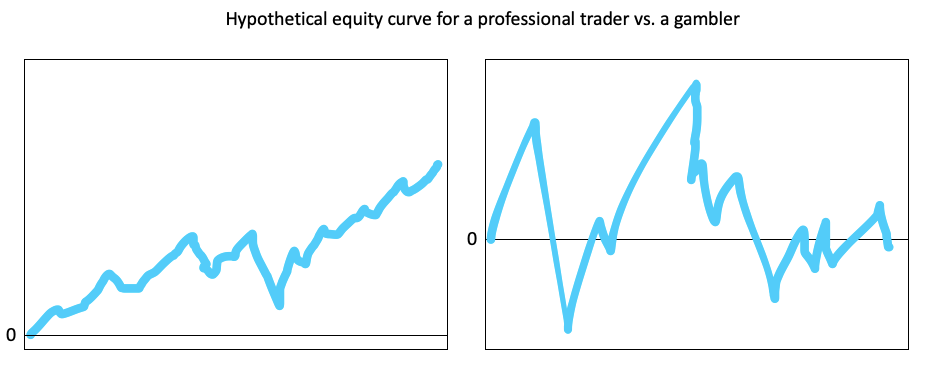
Since the first option requires hard work, many people will opt for the latter, although usually unconsciously.
It’s best to be honest with yourself upfront and identify your goals.
If you want to make a career from trading, you will need a lot of money regardless if you trade crypto or forex. We have a guide on how to determine exactly how much.
The guide is written for forex, but it will teach you the kind of thought process you need for crypto as well.
Just to put things into perspective: Warren Buffett has delivered an average annual return of 20% for shareholders since the beginning of 1965. That means if you have $100,000 and the skills of Warren Buffet, you might make $20,000 on average.
And that’s annual before taxes.
Sure, trading and institutional investing are not the same, but it is far-fetched to expect you’ll make significantly more than that consistently without taking extensive risks.
Since many of us don’t have hundreds of thousands of dollars laying around, a feasible solution is to start with a small trading account and build a track record of profitability.
For that you will only need about $500 or $1000 for both crypto and forex. Then all you need to do is show the world that you can trade and you will get funded over time.If you want to try your luck with crypto or forex, that’s a different story. You can risk whatever you want and hope to double it, triple it, or otherwise its “diamond hands” until you reach financial freedom.
Just don’t risk what you cannot afford to lose.
Availability
The good thing about forex and cryptocurrency markets is that neither of them are tied to one central location.
If you want to buy an Apple share, but the stock exchange where Apple is listed (NASDAQ) is closed, you must wait until the exchange reopens the next day.
Unlike major stock markets, both the forex and cryptocurrency markets operate across international time zones.

The forex market is open 24 hours a day, from the start of business hours on Monday morning in the Asia-Pacific time zone to Friday close of business hours in New York.
Even if it is three o’clock in the morning, somewhere in the world a financial center will be ready to take your trades. The only time you can’t trade forex is during weekends.The cryptocurrency market takes it even further as it is available 24 hours a day, seven days a week.
Banks and other financial institutions running the FX market are regular brick and mortar businesses that close during the weekend. Cryptocurrency exchanges on the other hand, operate entirely online and are happy to help traders express their market options even during weekends.
Number of Trading Instruments
The instruments that you can trade in forex are currency pairs.
A currency pair is the value of one currency being quoted against another. Since almost all currencies in the world are quoted against each other, there are quite a few pairs to choose from.
It’s important to consider that the bulk of trading volume takes place in the so-called major currencies, which are limited to a few internationally-used currencies such as the:
- Euro (EUR)
- Pound (GBP)
- US Dollar (USD)
- Aussie Dollar (AUD)
- New Zealand Dollar (NZD)
- Canadian Dollar (CAD)
- Swiss Franc (CHF)
- Japanese Yen (JPY)
The currency pairs made from combining these are typically the most actively traded.
You can trade lesser-known currency pairs (for example, HUF/EUR, PLN/USD, etc.), but the costs will be higher, and they are less suitable for trading styles like day-trading and high-frequency trading.
What about cryptocurrencies?
Most people have only heard of popular cryptocurrencies like Bitcoin and Ethereum, but in reality, there are thousands of different coins available.
You can go to CoinGecko.com to see for yourself.
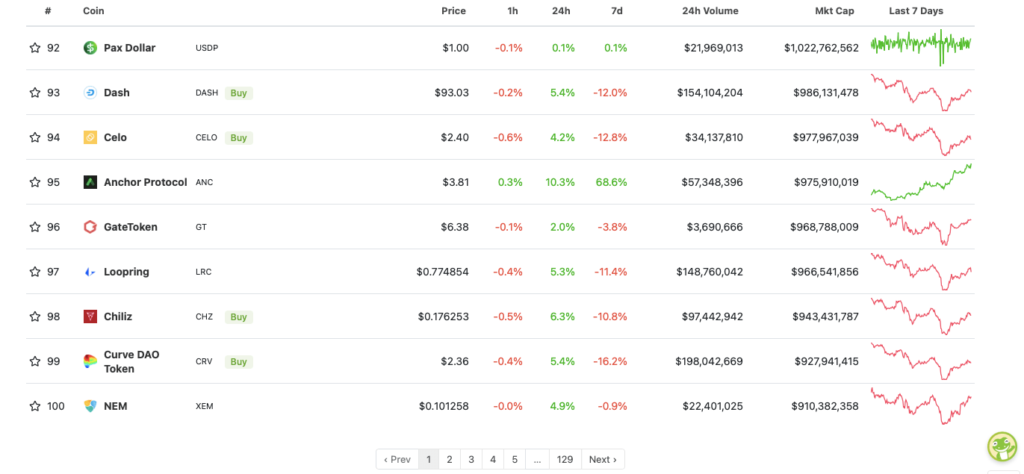
This article blongs to ForexSpringBoard.com.
Although NFTs and the majority of coins are traded on decentralized exchanges, there are plenty of cryptocurrencies available on centralized exchanges too.
Even though both forex and crypto offer a wide array of trading instruments, crypto is the clear winner here.
Security
While there is no centralized body governing the currency trading market, there are supervisory bodies in most countries that set standards that brokers under their jurisdiction must comply with.
This makes the forex market a safe choice for most people, however, there are some caveats.
To begin with, you should trade with a regulated broker. Today it is quite difficult to find unregulated brokers, but it doesn’t stop some people from deliberately seeking them out to get higher leverage or avoid taxes.
Needless to say, this is playing with fire.
You must also keep in mind that not all regulators provide the same protection.
It’s not enough to check a broker’s regulatory status. You must also need to know which regulatory agency your broker is registered with and how reliable that particular regulator is.

Some of the best internationally recognized regulators are:
- FCA – Financial Conduct Authority (United Kingdom)
- ASIC – Australian Securities and Investments Commission (Australia)
- CFTC – Commodities and Futures Trading Commission (United States)
These regulators have great frameworks for client protection and they closely monitor brokers for compliance.
Try to stay away from brokers under offshore licenses. Regulators in those jurisdictions are much more lenient and client compensation schemes are rarely in place.
Cryptocurrency markets are less regulated than forex, but centralized exchanges are usually safe in the sense that they must comply with all applicable laws in the jurisdictions they operate in.
Most centralized exchanges will have an extensive user base, a proven team, and ensure that only reliable coins are listed on their platform. All this means that you’re very unlikely to get scammed on a centralized exchange.
If you decide to trade on decentralized exchanges, however, you must be vigilant.People have many creative ways of trying to steal your money. For example, they might create fake versions of existing coins to trick you into purchasing the wrong asset. It’s super important to be on high alert because there’s no way to reverse a transaction on the blockchain.
Volatility
Volatility is the measure of how drastically a market’s prices change. For example, if a share costs $100 today, $250 tomorrow, and $190 the day after, it is considered very volatile.
So how does forex’s volatility compare to crypto’s?
Volatility in the forex market tends to be more limited, but there can be periods of high volatility.
For cryptocurrency traders, these are rookie numbers. Even for mature cryptocurrencies like Bitcoin, it is not rare to see double digit price swings.
And with meme coins and new projects, the numbers can get wild really quick.
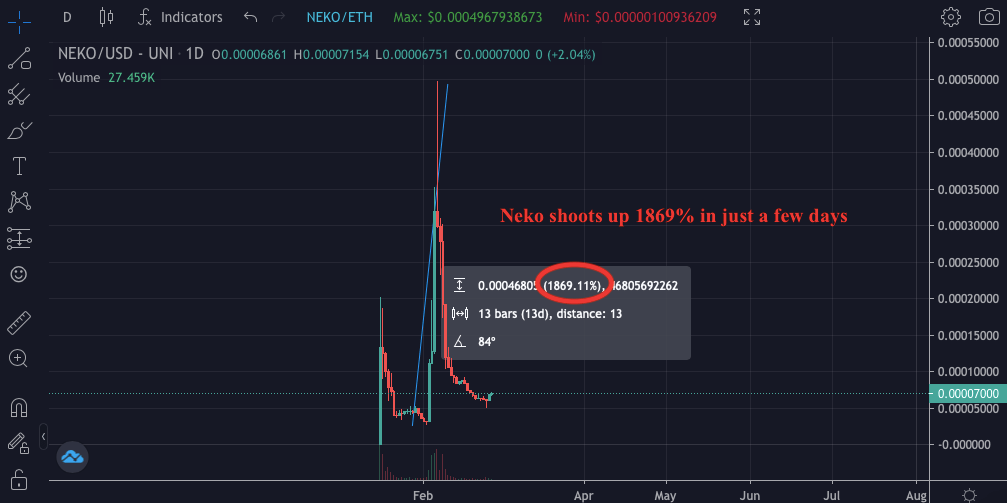
It is important to consider that although the market itself is less volatile, retail FX traders almost exclusively trade on leverage. This means that even small price movements will have significant impact to your account equity.
Liquidity
The reason the forex market is less volatile than crypto is its massive liquidity.
A market is considered liquid when it is easy to quickly purchase or sell an asset without causing a drastic change in the asset’s price. The forex markets are the largest and most liquid asset markets in the world.
According to Statista, the United States alone imported goods valuing around $2.83 trillion from international trading partners in 2021.
It is reasonable to assume that most of these imports were paid for with a foreign currency such as the euro or yen. And this is only the US importing goods.
Trading activities of other countries, foreign investments, and speculative flows all involve currency transactions. The Bank of International Settlements estimates that the daily volume in the forex market is $6.6 trillion per day.
That’s massive and it means that anyone can buy and sell currencies with ease.
While Bitcoin and other cryptocurrencies also trade 24 hours a day around the globe, they are less liquid than the currency market.
You can always go to CoinMarketCap to check the daily crypto market volume.

Currently it is $87.00B, which is not too shabby but far less than that of the FX market.
That said, you will usually face no problems trading cryptocurrencies as a retail trader. You might run into liquidity related issues with new projects where the trading volume is low or if you use a less liquid exchange.
Forex vs. Crypto in Summary
Forex trading and cryptocurrency trading are similar in that they’re both difficult to master and make consistently profitable over a long period of time.
There are some key differences in factors like market size, knowledge intensity, the number of trading instruments, and volatility. Beginners thinking about which market to choose must think carefully and weigh the advantages and disadvantages.

